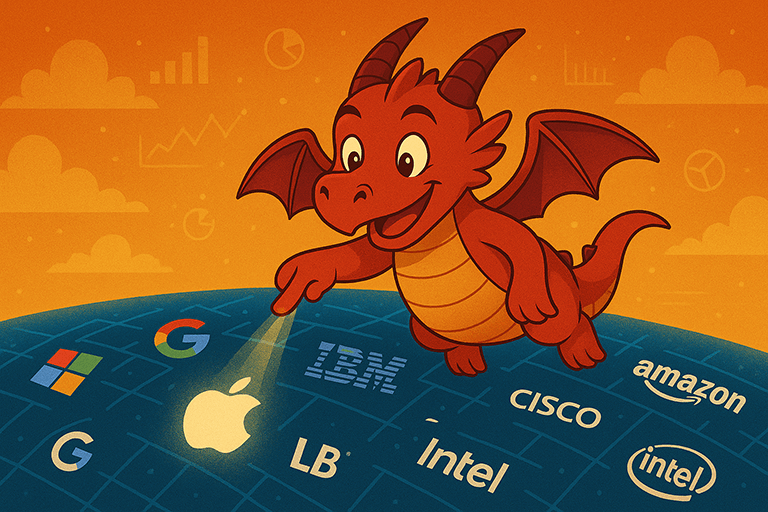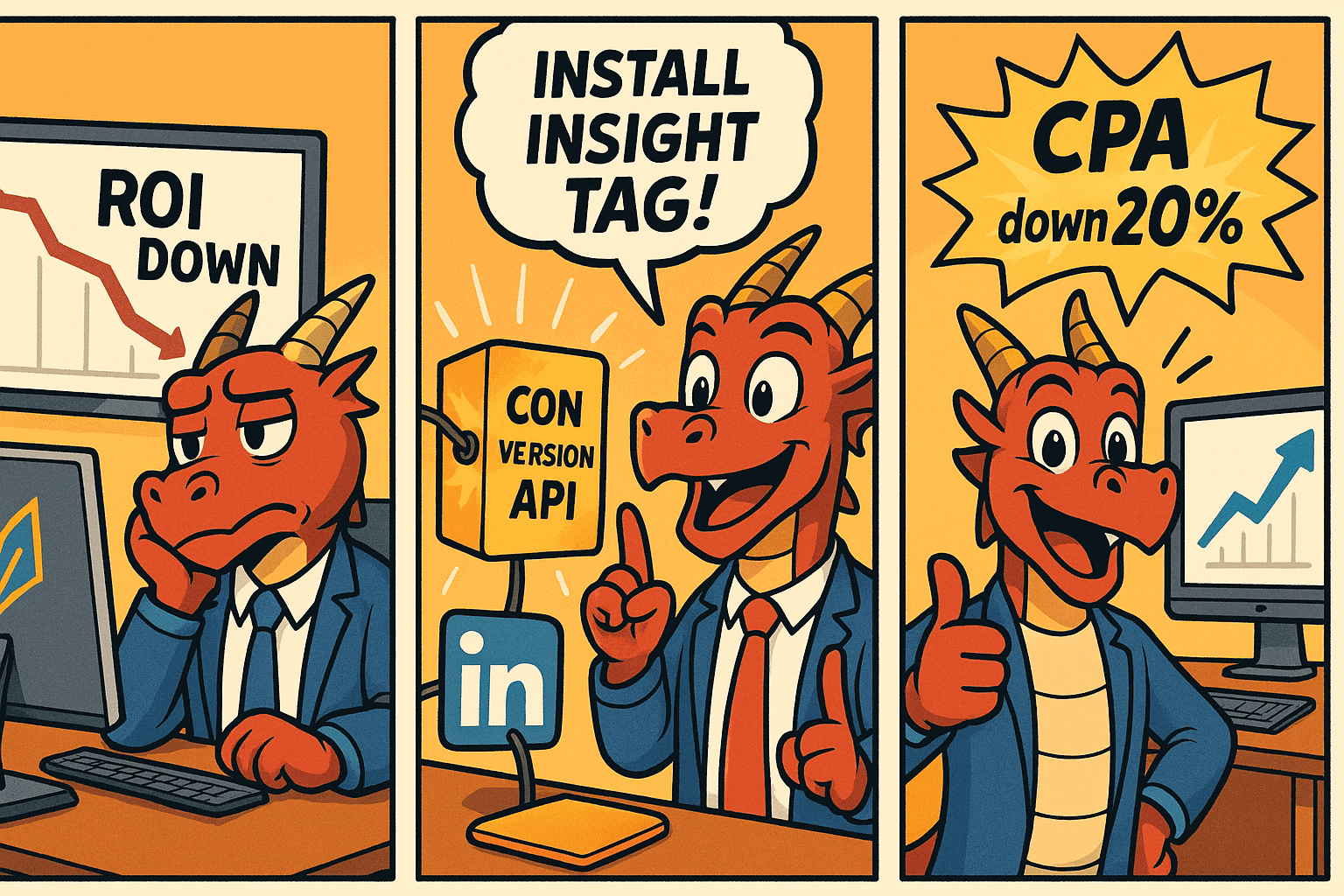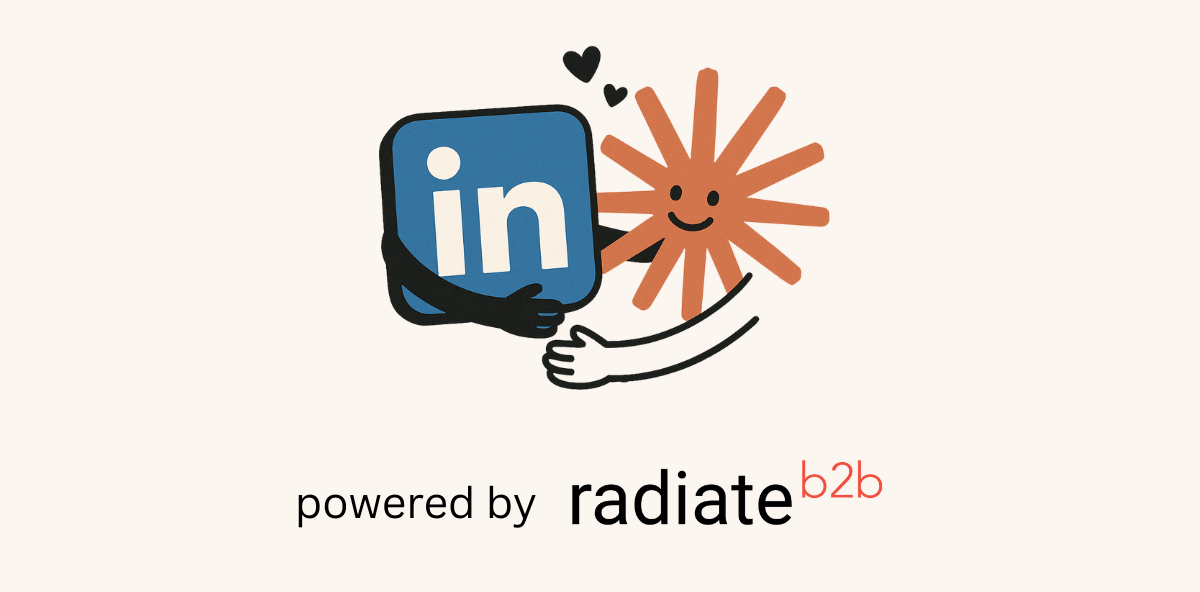LinkedIn Ads performance analysis is changing.
Imagine being able to ask an AI assistant, “How are my LinkedIn Ads campaigns doing this week?”, and instantly get a clear answer.
(more…)
In B2B marketing, success isn’t about casting the widest net – it’s about targeting the right companies with the right message. Targeting companies with ads (or account-based advertising) rather than industries means that you can reach the right companies.
Over the past decade, I’ve watched the rise of account-based advertising (or ABM advertising) transform demand generation.
By focusing our ad spend on high-value target accounts, we’ve consistently seen higher ROI and win rates than broad, spray-and-pray approaches.
(more…)
LinkedIn is full of your target audience and setting up campaigns to target them can sometimes feel too easy.
What if you are leaving money on the table, though? It is too easy to skip over the conversions section, but it is incredibly important.
While clicks and impressions are useful metrics, they’re often not enough to prove the real impact on your business. The key to truly understanding your ROI lies in tracking LinkedIn ad conversions.
Sometimes it can be easy to do this.
For example, when the only traffic being delivered to a landing page is from your LinkedIn Ad, so any leads from that page are a conversion.
Sure – that helps reporting. But is it helping your LinkedIn campaigns perform better?
Here are three ways implementing LinkedIn conversion tracking can immediately optimise your ad spend and elevate your marketing effectiveness.
Conversion tracking allows you to see exactly which ads and targeting criteria are driving tangible results, such as leads, form submissions, or sales.
Using demographic reporting, instead of guessing what works, you’ll know precisely which audiences and messaging resonate best.
This insight means you can focus your budget on the most profitable segments, significantly enhancing the quality and value of your leads.
Every marketer’s nightmare is budget waste. Without accurate conversion data, you could unknowingly spend thousands on clicks that never turn into meaningful engagements.
Implementing LinkedIn Conversion Tracking, especially through the LinkedIn Ads Conversion API, lets you identify underperforming ads quickly. You can reallocate spend away from ineffective campaigns toward ones demonstrating real revenue potential, ensuring every penny is well invested.
By feeding conversion data back into LinkedIn, targeting and spend improve, and drive even more conversions as LinkedIn seeks to optimise to the subset of your targeted audience that is most likely to convert.
The LinkedIn Ads Conversion API takes your tracking one step further by providing real-time insights into conversions directly tied to your CRM. This seamless integration allows you to automate and optimise campaigns continually.
According to Dreamdata’s 2025 LinkedIn Ads Benchmark Report, marketers using the Conversions API experienced a 20% reduction in Cost per Acquisition (CPA) and a 31% increase in attributed conversions. That’s a direct boost to your ROI. See more LinkedIn Ad stats here.
By harnessing the power of LinkedIn conversion tracking, you’ll not only optimise your ad performance but also confidently demonstrate marketing’s value within your organisation.

LinkedIn Ads has become the go-to platform for B2B marketers looking to generate high-quality leads, especially for SaaS companies looking to scale.
With over 35 million professionals in the UK using LinkedIn, it’s the perfect environment for targeting the entire decision-making unit, whether that is the decision maker, the user or wider.
We’ll walk you through seven proven LinkedIn advertising strategies tailored specifically for B2B SaaS companies in the UK.
(more…)
Would you like to ask Claude, ChatGPT, Gemini and others how your LinkedIn Ads campaigns are doing?
Up until now, it has been difficult to use the major LLMs to analyse your LinkedIn campaigns.
(more…)
Business-to-business (B2B) advertising is the practice of promoting products or services from one business to another.
Unlike B2C (business-to-consumer) marketing, B2B advertising focuses on targeting key decision-makers within organisations, such as procurement managers, department heads, or C-level executives, who influence or control purchasing decisions.
(more…)
It should be no surprise that B2B Advertising and Testing go hand in hand. We often see significant differences in results between campaigns with the same hypothesis but different creative approaches.
But it can be easy to get testing wrong.
(more…)
The foundations of successful B2B advertising start with targeting your first party data – data that you own – and the best way to deliver success is with retargeting ads.
Retargeting ads are 76% more likely to be clicked on than a regular ad.
(more…)